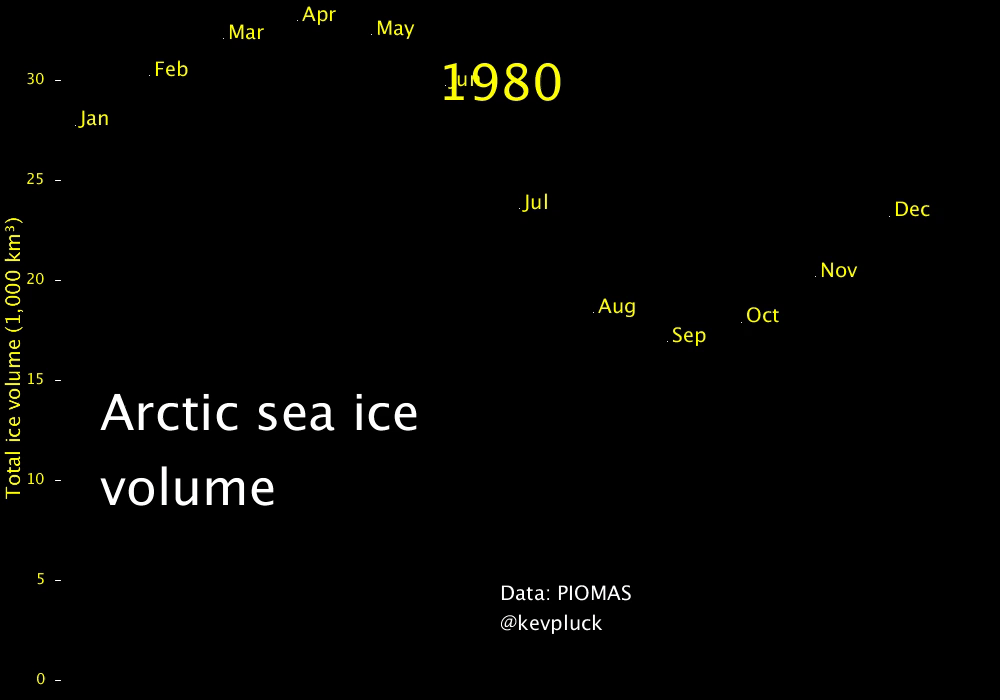Trends in sea ice volume are a significant indicator of Arctic climate change.
The average Arctic sea ice volume in September 2020 was 4.3 thousand km3. This value is only 500 km3 over the record 3.8 thousand km3 set in 2012. It is making 2020 the 3rd lowest on record for September. Monthly ice volume was 74 percent beneath the maximum in 1979 and 59 percent beneath the mean value for 1979-2019. Typical September 2020 ice volume drops on the trend line.
Arctic sea ice volume and extent 1979 - September 2020
The average Arctic sea ice volume in September 2020 was 4.3 thousand km3. This value is only 500 km3 over the record 3.8 thousand km3 set in 2012. It is making 2020 the 3rd lowest on record for September. Monthly ice volume was 74 percent beneath the maximum in 1979 and 59 percent beneath the mean value for 1979-2019. Typical September 2020 ice volume drops on the trend line.
Arctic sea ice volume and extent 1979 - September 2020
Reddit user: kevpluck
Arctic sea ice volume

Reddit user: kevpluck

Reddit user: kevpluck
This post may contain affiliate links. As an Amazon Associate, I earn from qualifying purchases.